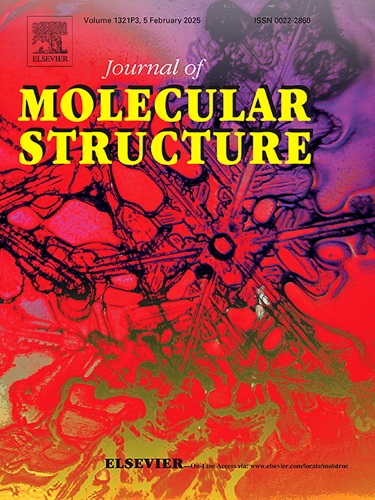Diverse synthetic approaches to 3-arylmethylidene- and bis-3,5-arylmethylidene-N-benzylpiperidin-4-ones with thiophene scaffolds: The comparative experimental study
IF 4
2区 化学
Q2 CHEMISTRY, PHYSICAL
引用次数: 0
Abstract
As one of the most active compounds, the mono-substituted 3-arylmethylidene-N-benzylpiperidin-4-ones were found to possess similar acetylcholinesterase (AChE) inhibitory activity as the drug donepezil. Nevertheless, since their discovery, their investigation in pharmaceutical sciences remains undeveloped, probably because of their synthetic unavailability. On the other hand, their bis-substituted analogues – chalcones/dienones - exhibit structural similarity to curcumin and their preparation represents an easy and well-known process. Accordingly, our research efforts are concerned with investigations of synthetic approaches towards the N-benzylpiperidon-4-one-based monoenoes 4a-6a in comparison with the synthesis of their bis-substituted counterparts 4b-6b. Both, either the synthesis of monosubstituted derivatives or bis-substituted chalcones are with importance in drug design. The substitution pattern of N-benzylpiperidin-4-one was realized through the thiophene- and [2,2´]bithiophene-scaffolds. Since spatial arrangement is crucial for the pharmacological effect, geometry optimizations are included.

以噻吩为支架的 3-芳基亚甲基和双 3,5-芳基亚甲基-N-苄基哌啶-4-酮的多种合成方法:对比实验研究
本文章由计算机程序翻译,如有差异,请以英文原文为准。
求助全文
约1分钟内获得全文
求助全文
来源期刊

Journal of Molecular Structure
化学-物理化学
CiteScore
7.10
自引率
15.80%
发文量
2384
审稿时长
45 days
期刊介绍:
The Journal of Molecular Structure is dedicated to the publication of full-length articles and review papers, providing important new structural information on all types of chemical species including:
• Stable and unstable molecules in all types of environments (vapour, molecular beam, liquid, solution, liquid crystal, solid state, matrix-isolated, surface-absorbed etc.)
• Chemical intermediates
• Molecules in excited states
• Biological molecules
• Polymers.
The methods used may include any combination of spectroscopic and non-spectroscopic techniques, for example:
• Infrared spectroscopy (mid, far, near)
• Raman spectroscopy and non-linear Raman methods (CARS, etc.)
• Electronic absorption spectroscopy
• Optical rotatory dispersion and circular dichroism
• Fluorescence and phosphorescence techniques
• Electron spectroscopies (PES, XPS), EXAFS, etc.
• Microwave spectroscopy
• Electron diffraction
• NMR and ESR spectroscopies
• Mössbauer spectroscopy
• X-ray crystallography
• Charge Density Analyses
• Computational Studies (supplementing experimental methods)
We encourage publications combining theoretical and experimental approaches. The structural insights gained by the studies should be correlated with the properties, activity and/ or reactivity of the molecule under investigation and the relevance of this molecule and its implications should be discussed.
 求助内容:
求助内容: 应助结果提醒方式:
应助结果提醒方式:


